Public Health Response to Climate Change: A Discussion Forum Post
VerifiedAdded on 2022/11/13
|5
|701
|257
Discussion Board Post
AI Summary
This discussion post examines the intricate relationship between climate change and public health, specifically focusing on the changing epidemiology of vector-borne diseases. The assignment addresses the increased transmission of vector-borne diseases due to climatic changes. It highlights the impact of climate change on disease epidemiology, including the aftermath of natural disasters like floods and the role of warming temperatures. It also includes a detailed analysis of population-based strategies such as disaster management strategies, reducing emissions, and implementing resilience training. The assignment emphasizes the need for involvement from various stakeholders like environmentalists and governmental departments, along with the health department, to effectively address the challenges posed by climate change on public health.
1 out of 5
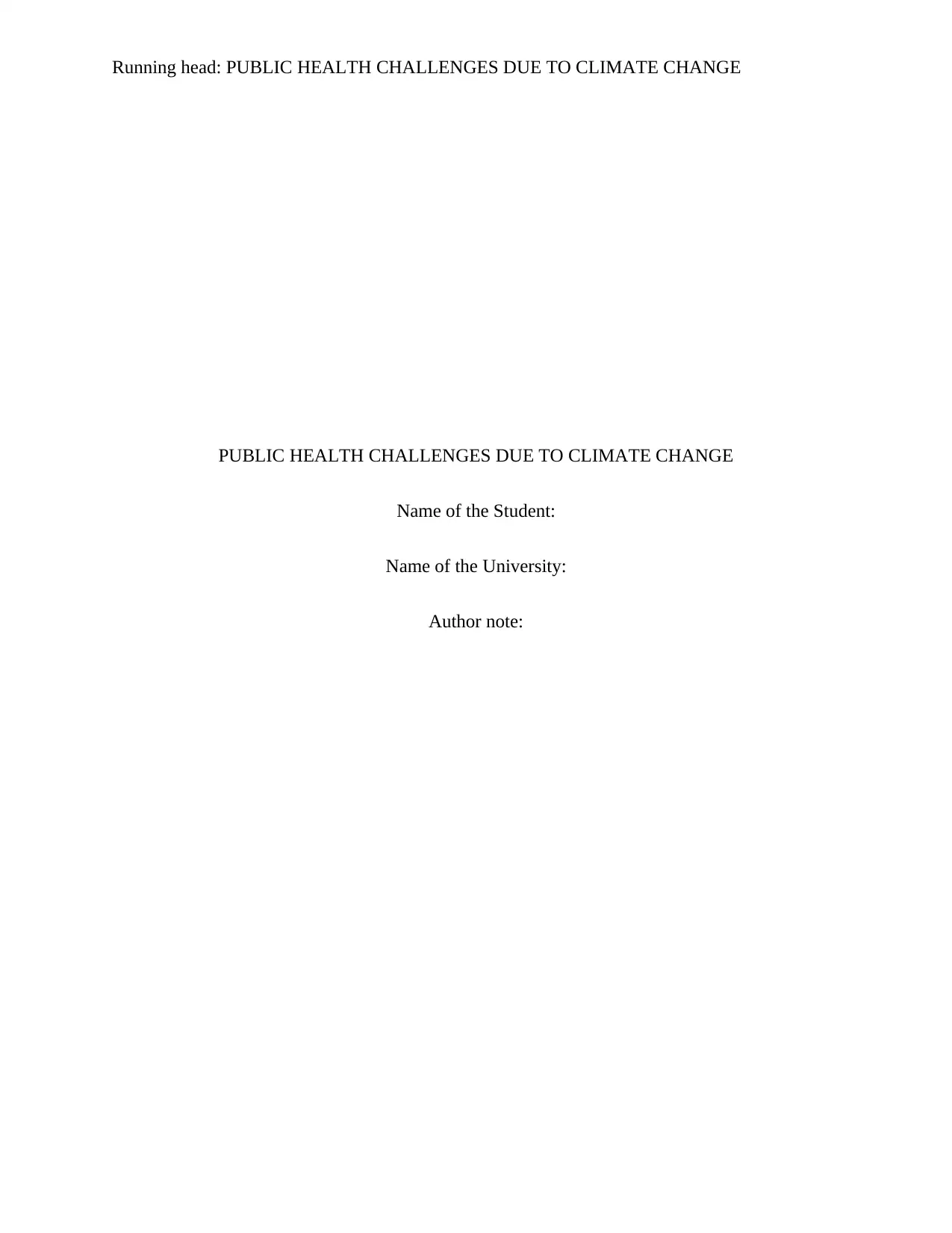
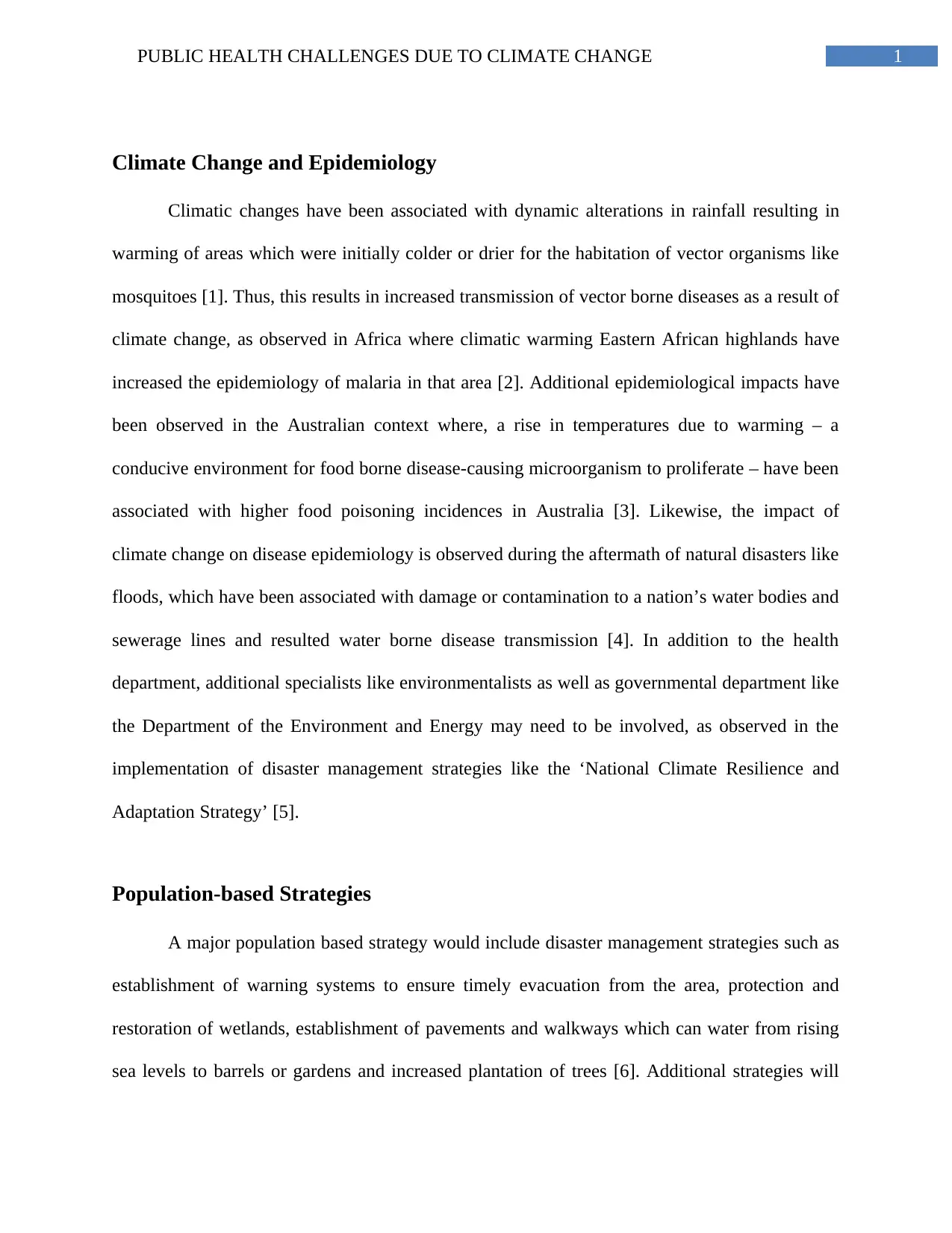
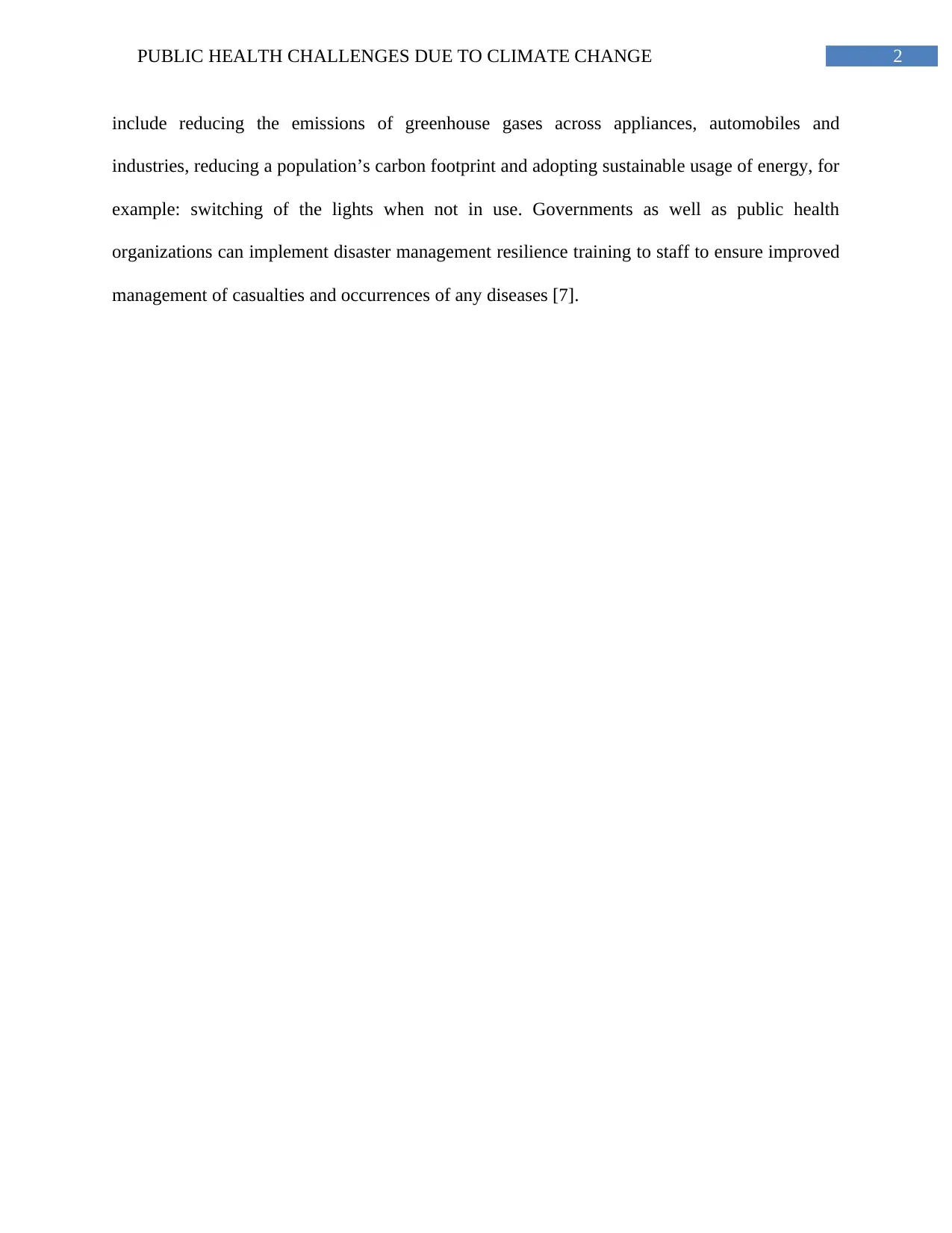

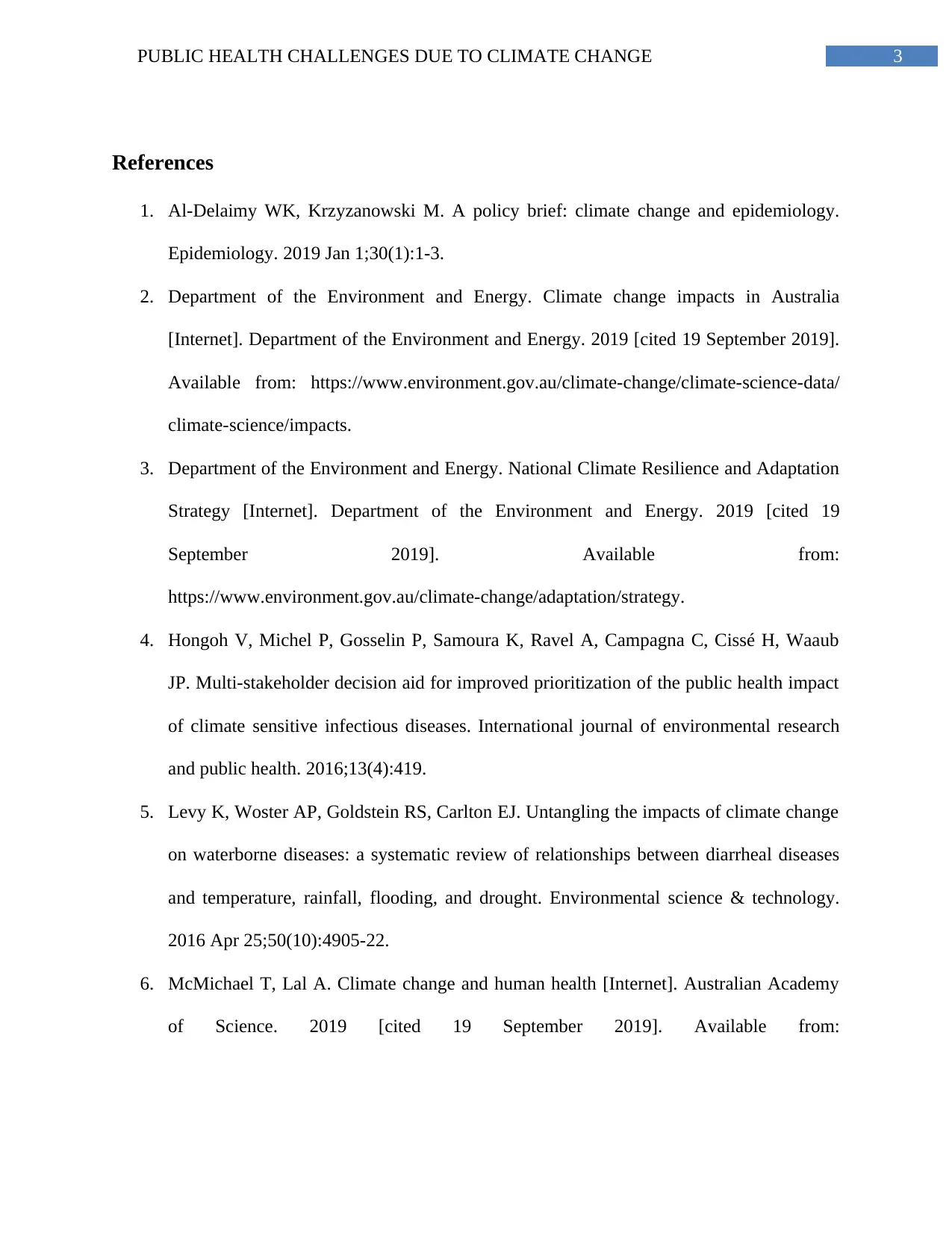
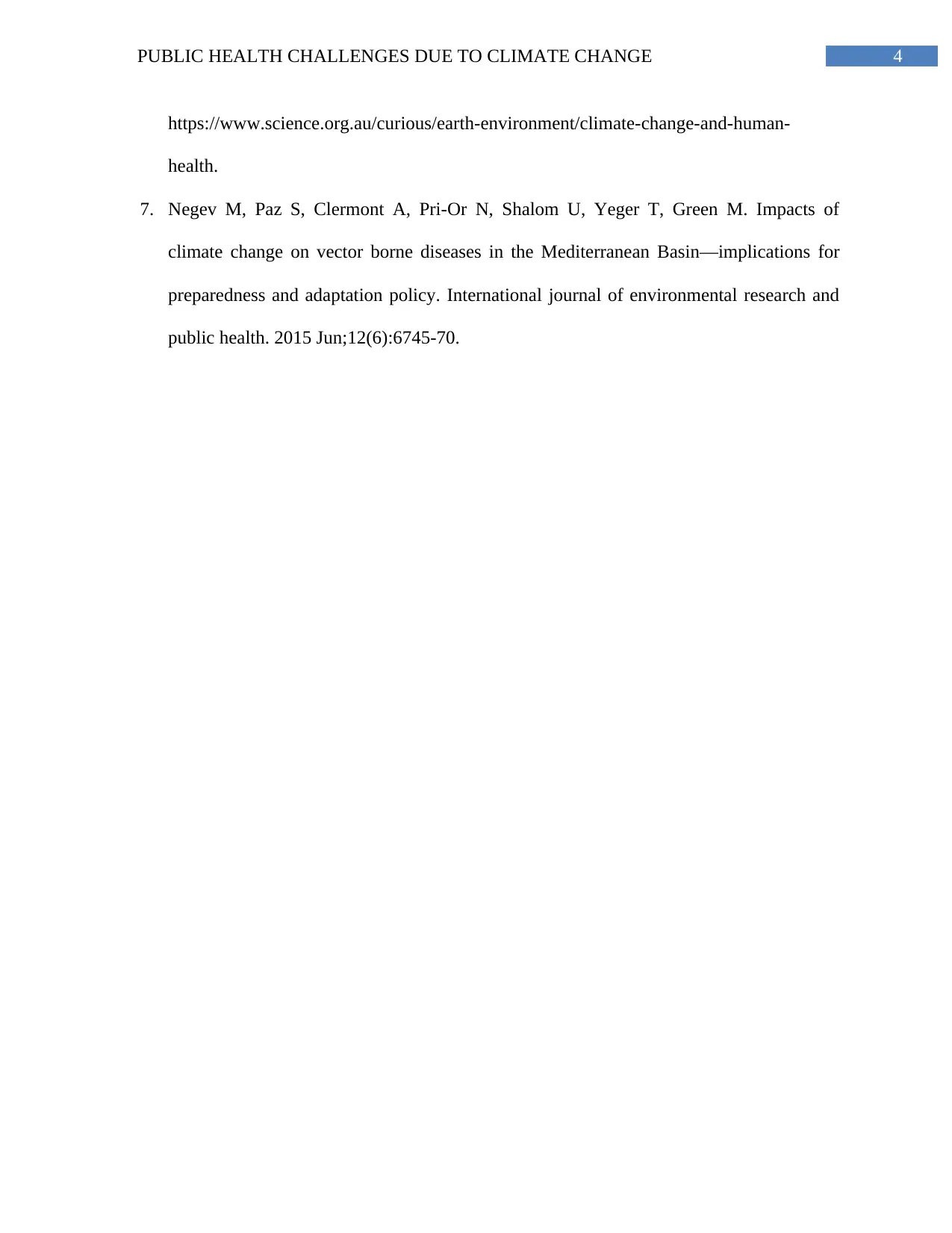






![[object Object]](/_next/static/media/star-bottom.7253800d.svg)